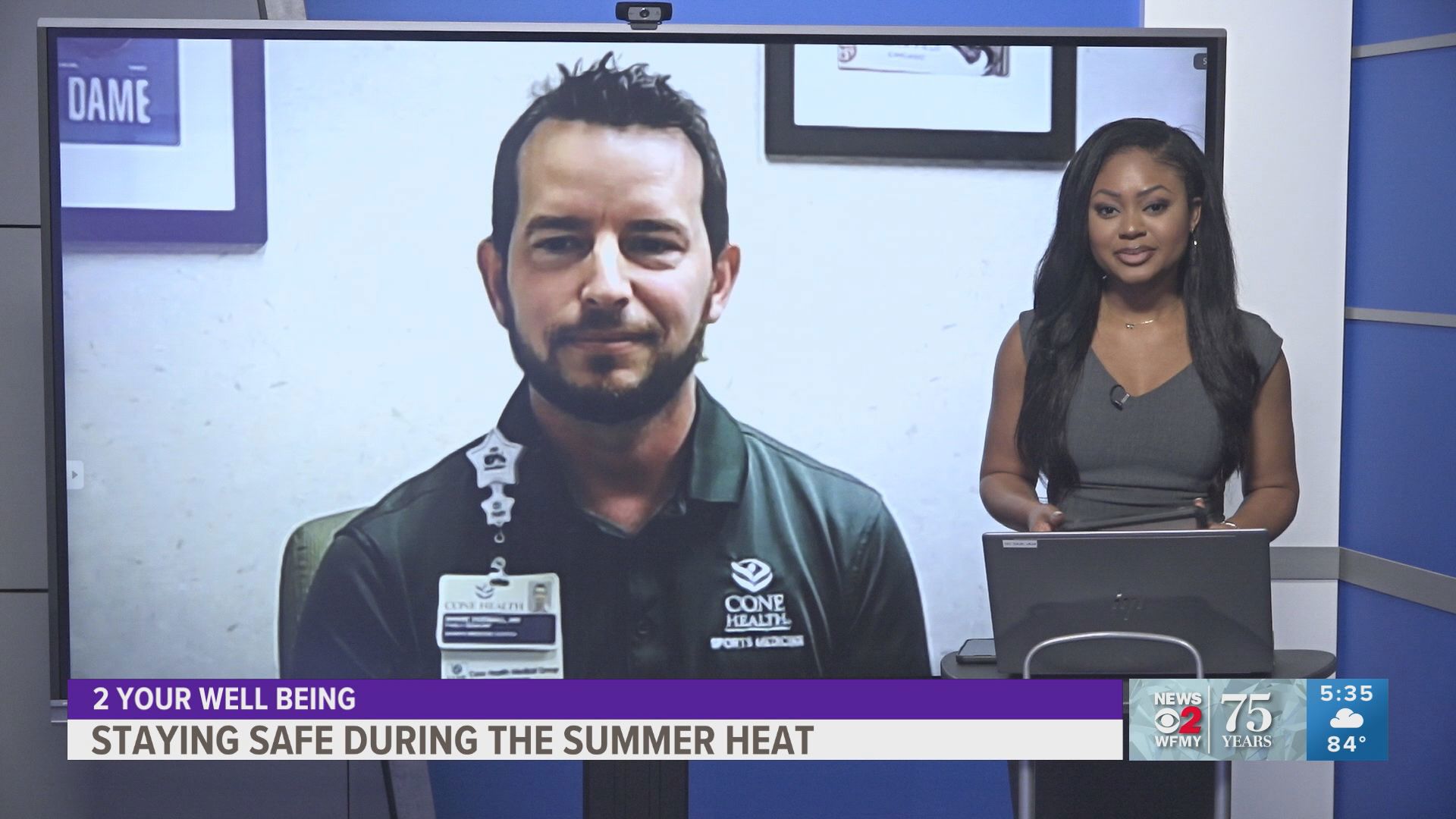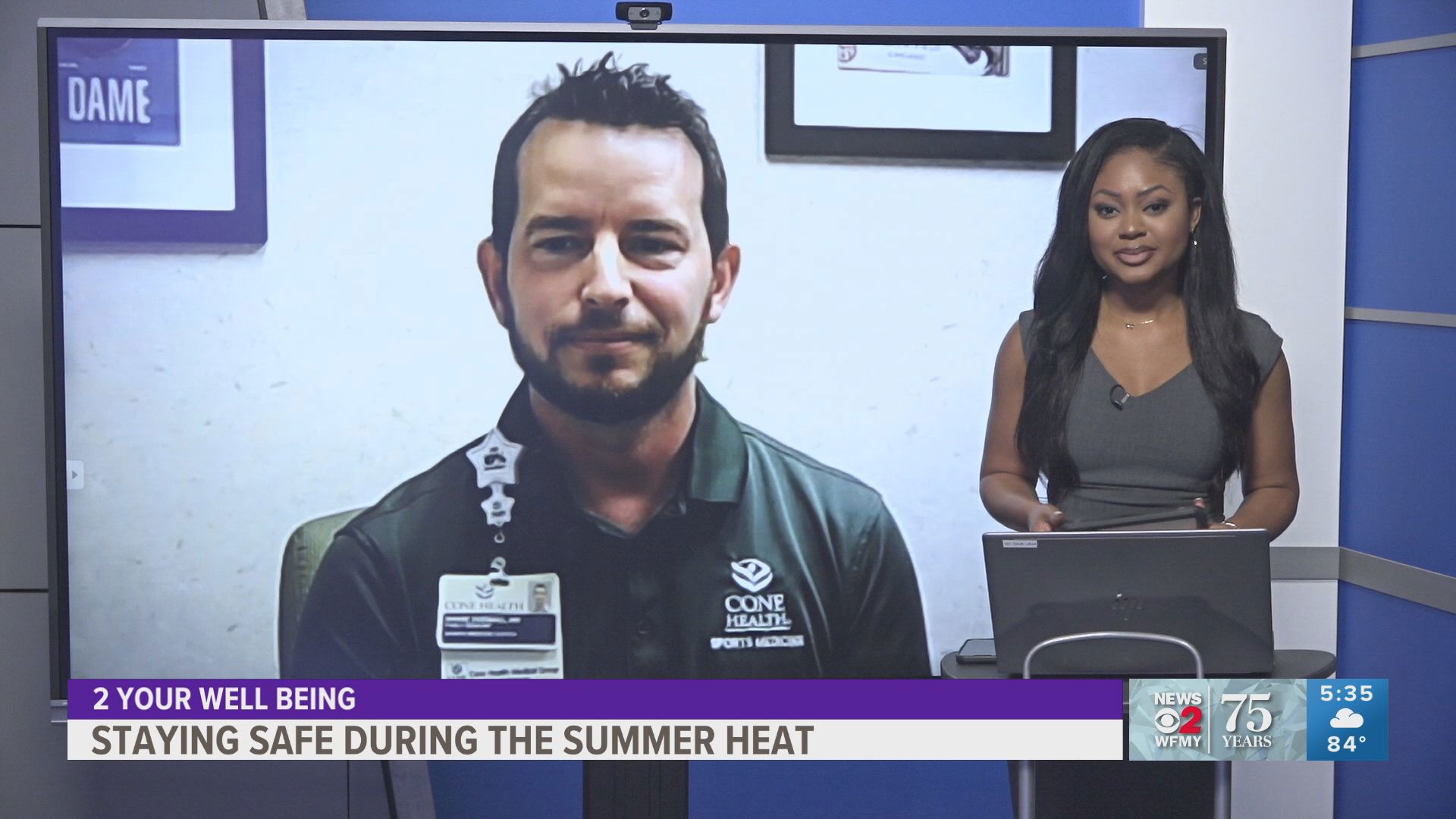GREENSBORO, N.C. — Hot summer days are here!
So, with us is Dr. Shane Hudnall, with Cone Health Sports Medicine Center, to review how to stay safe in the summer heat and what we all should know about heat-related illness.
Quick URLs:
Heat stroke – what is it and how concerning is it?
"Heat stroke is what we worry about the most, it's when your body's thermostat is not able to control your temperature. Your temperature gets above about 104 degrees. And then you can start to get neurologic symptoms. The most common ones that we see are loss of consciousness or confusion. We've seen people die from [heat stroke]."
What are the warning signs?
"A little bit of a headache, maybe some muscle cramping, feel a little dizzy, you need to listen to your body there. Go inside if you can or get into a shaded area and take the proper precautions so you don't end up with heat stroke."
If you or someone you’re with becomes overheated, what should you do?
"Bring them indoors. If that's not something you can do, get them under a tree or under a pavilion, somewhere that's shaded. If you notice they have some excessive clothing, like they're wearing a jacket or pants, removing that excessive clothing so their arms and legs can be exposed so they can sweat some of that off. If ice is available, put an ice pack on their neck, on their chest, on their stomach, just anywhere to help cool them off. If they haven't gotten confused or lost consciousness, having them drink cold fluids is very important. If you notice they are becoming more confused, maybe hallucinating or saying things that don't make a lot of sense, that's when you need to call 911."
Anything you shouldn’t do?
"Don't push through it, especially if you're exercising in this heat. If you're noticing you're having heat illness, take that seriously."
What steps should people take to prevent getting overheated?
"Avoiding the hottest times of the day between 10 a.m. and 4 p.m., making sure that you hydrate, hydrate, hydrate, wearing light, loose-fitting clothing, if you're outdoors having your arms and legs exposed, wear sunscreen, of course, if you're in bright sunlight - wearing a hat."
Hudnall answers even more questions in the interviews above.


